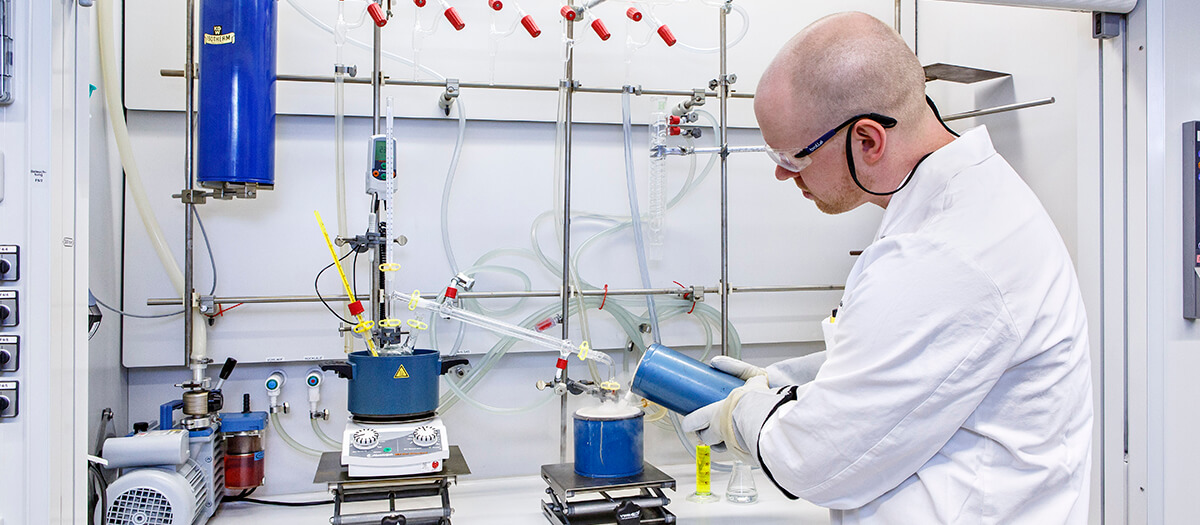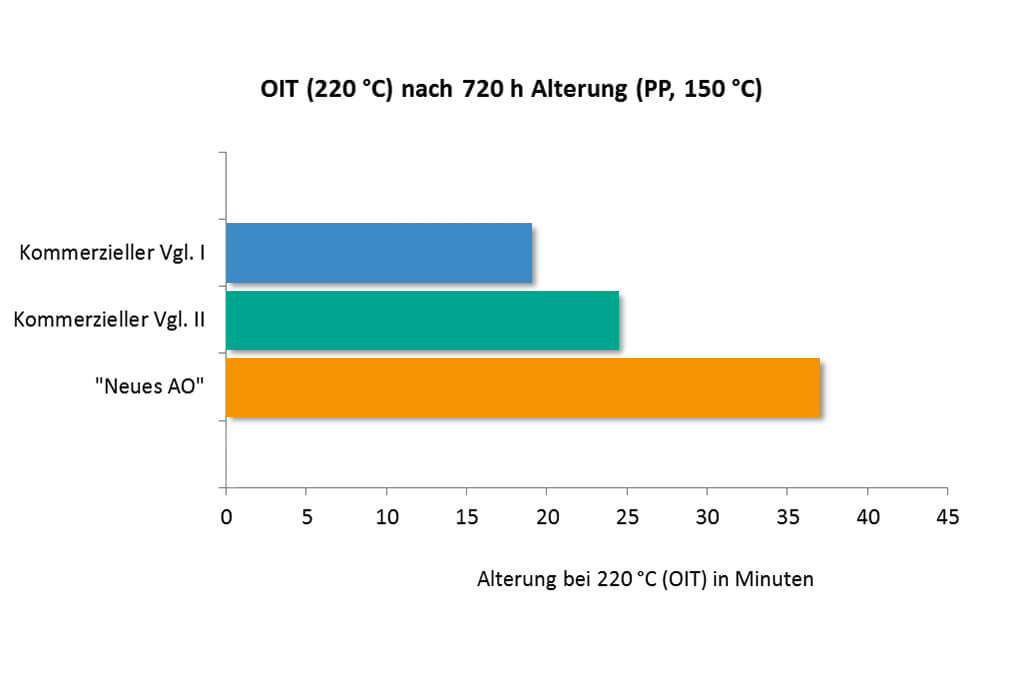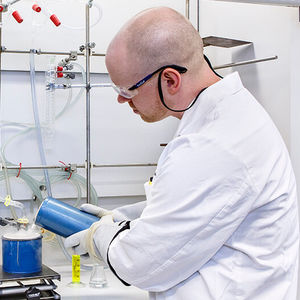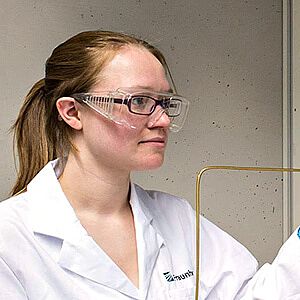New stabilizers for the long-term stability of polyolefines.
Additives, Aging, Plastic, New Antioxidants

Plastics are subject to oxidative aging processes, particularly when used long-term at high temperatures in the presence of oxygen. Consequently, they lose their desired properties, such as breaking strength, and have to be stabilized with added antioxidants. In addition to long-term stabilization, hydrolytic stability and a low tendency to discoloration are required.
New antioxidants with excellent long-term effect
The damage to plastics due to (aut)oxidation is based on radically induced chain scission of the matrix polymer. Added antioxidants capture correspondingly reactive species and render them harmless. However, with the development of ever better (high-tech) plastics – which can certainly compete with steel – the requirements placed on stabilizers are also increasing. In addition to a low price, it is also necessary to exclude undesirable discoloration tendencies. The additives must also withstand use of the plastics to which they have been added in hot and humid environments (hydrolytic stability).
Scientists from Fraunhofer LBF have extensive expertise in the development and synthesis of custom-designed additives and have developed new stabilizers with outstanding properties by developing a simple synthesis process for complex antioxidants. The special characteristic here is the high thermal stability of the novel antioxidants with simultaneously excellent long-term stabilization of polyolefins.
In addition to their low discoloration tendency, the antioxidants developed have a low tendency to migrate out of the polymer matrix and are also prepared for the future with regard to REACH (European regulation concerning the risk assessment of chemicals).
With regard to sustainable and at the same time economically attractive application, the new compounds are suitable, among other things, for optimizing common commodity systems (e.g. PP talc) in the high temperature range and can thus replace the more expensive engineering plastics.
A thermal (oven) aging process with periodic sampling was used to evaluate the long-term effectiveness of the new stabilizers. Determination of the OIT (oxidation induction time) by means of combined TGA-DSC analysis enables fast results (Fig. 1). The OIT in minutes corresponds in this case to the inhibition time which the polymer withstands due to the added antioxidant, before oxidation and therefore destruction occurs. In addition to the methods referred to above, the chemical/physical properties of aged specimens can be determined by other analytical characterization methods, such as elongation at break or the carbonyl index.
The work is being carried out as part of an internal research project at Fraunhofer LBF and will strengthen the Institute’s skills in developing methods for the synthesis and accelerated evaluation of stabilizers.
Customer benefits
Fraunhofer LBF provides the full range from idea and implementation to the finished end product. Newly developed antioxidants enable the use of polyolefins at high temperatures while at the same time ensuring excellent long-term stabilization. The upgrading of common polymer systems (such as talc-filled polypropylene) with the new high-temperature stabilizers makes them ideal for use in automotive engineering (engine compartment panels/interior trim) and for cables/hoses. The optimized standard plastics presented can replace expensive high-tech plastics where appropriate.
Abstract
The Institute provides solutions to specific questions of additive synthesis and evaluation. Complex antioxidants, which enable excellent stabilization of polyolefins against heat aging, have been made accessible by means of simple synthesis processes. The new antioxidants make it possible to use cost-efficient commodity plastics, such as polypropylene, under long-term thermal stress instead of very expensive engineering plastics. The new antioxidants also show the polymer’s low volatility and low discoloration tendency.
Contact
- Dr. Elke Metzsch-Zilligen
- Phone: +49 6151 705-8609
- elke.metzsch-zilligen@lbf.fraunhofer.de









